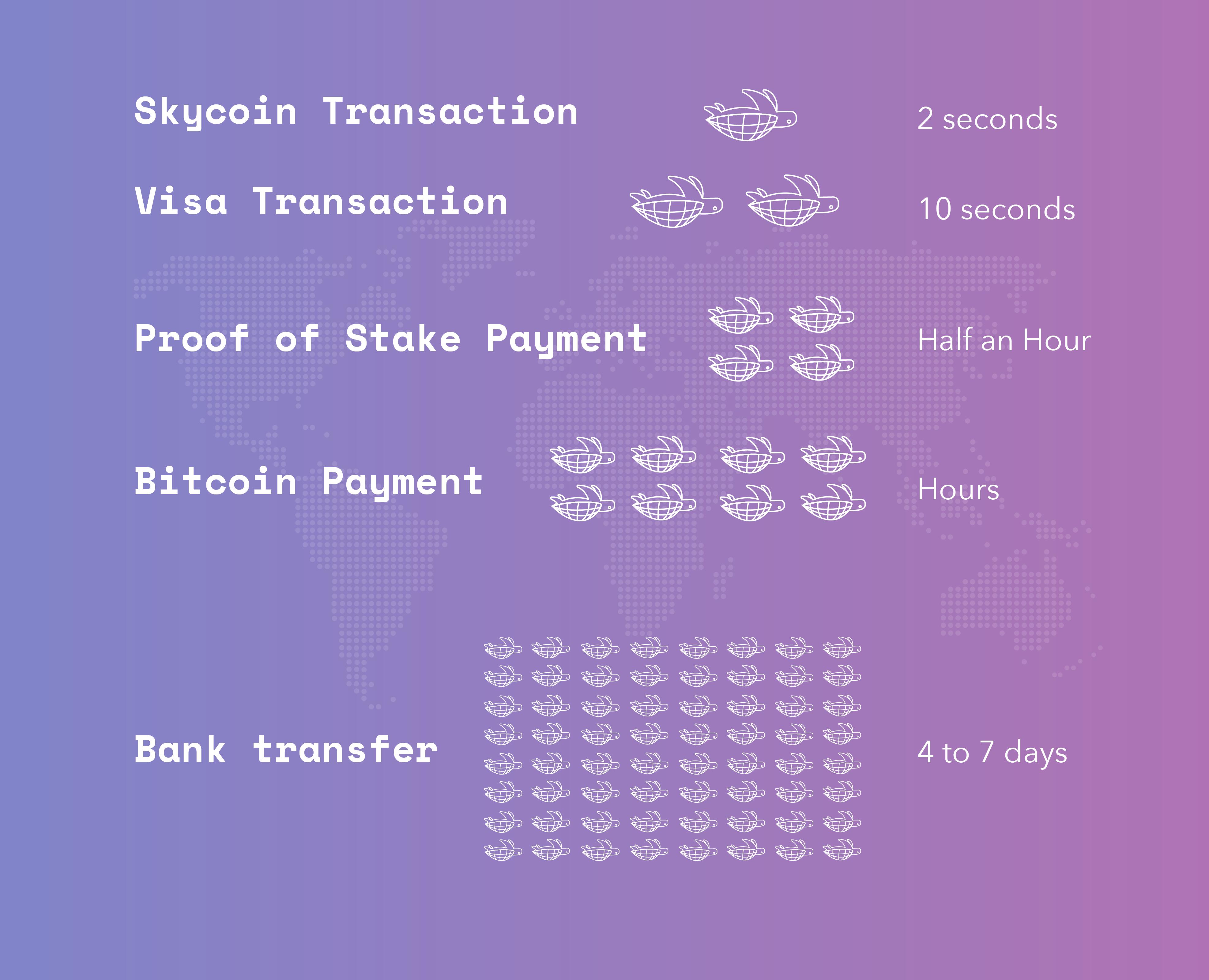 Back to list
Back to list
Digital Gold
Satoshi’s original vision for Bitcoin was revolutionary. A global currency that existed above nations and out of the reach of trusts and inflation, Bitcoin should have rocked the financial world to its core. But the vision failed. Instead of ushering in a new era of decentralization, Bitcoin itself became centralized. Power concentrated into three major mining pools. Transaction speed slowed to hours. Fees skyrocketed to their current $40 level. Today, it’s clear that Bitcoin didn’t deliver on its promise of a decentralized, peer-to-peer digital currency.
Skycoin is here to fix that. Over the past five years, the Skycoin Project’s research and development team has worked to find innovative ways to improve legacy PoW/PoS algorithms. Skycoin’s new consensus algorithm restores control of the network to the users. It goes back to Satoshi’s original vision, paving the way for a mass adoption of cryptocurrency that will replace the legacy banking system.
The unique features of Skycoin set it apart from other cryptocurrencies. Unlike most recent coins, Skycoin has its own blockchain, consensus algorithm, and developers. Skycoin is not an Ethereum ERC20 token. It’s a third-generation cryptocurrency based on the brand-new consensus framework Obelisk. Skycoin uses Obelisk to decentralize transaction processing and approval.
Skycoin’s revolutionary consensus algorithm lets transactions happen in seconds, not hours. This eliminates the performance gap between blockchain-based payments and centralized credit card networks. With zero transaction fees and lightning-fast speed, Skycoin represents the first viable alternative to centralized banking. It’s poised to do what Bitcoin couldn’t: transform the financial world for everyone across the globe.

Digital Gold: No Inflation
Satoshi designed Bitcoin to protect wealth from inflation. Bitcoin is an immutable currency, with a finite supply capped at 21 million. By capping the number of Bitcoins that can exist, Satoshi hoped to create digital gold: he wanted to provide a premium investment that could return value over the years.
Unfortunately, Bitcoin had a flaw. Miners could receive new coins through the mechanism of block reward. The newly-created coins caused inflation, and control centralized into one or two large mining pools. The effect was a monopoly that destroyed the equalizing potential of Bitcoin.
Skycoin eliminates this flaw. Like Bitcoin, Skycoin is an immutable currency with an issuance capped at 100 million. But unlike Bitcoin, Skycoin features a redesigned consensus mechanism that removes the block reward. This change has profound consequences for users.
Without the block reward, miners have no incentive to monopolize and control the Skycoin network for personal gain. Skycoin’s design prevents the monopolization that persists in Bitcoin and Ethereum. By eliminating block reward, Skycoin prevents inflation and provides a more perfect “digital gold.”
Skycoin also eliminates transaction fees. Like block rewards, transaction fees plague other cryptocurrencies by creating monetary incentives. Miners strive to push up fees at the cost of the network. With no fees or block rewards, Skycoin offers an investment that can benefit all users fairly.
When Skycoin users make transactions, they spend Coin Hours, not Skycoin. Coin Hours are shares of network resources that work like dividends. A user receives one Coin Hour for each hour they hold a Skycoin. The dividend pays out when Coin Hours are traded at exchange rates. 100 million new Coin Hours are created each hour, and each transaction must burn a minimum of 50% of its Coin Hour inputs. This creates scarcity and limits the number of Coin Hours in circulation to an equilibrium value. Through the Coin Hour system, Skycoin provides network transactions that prevent inflation and support fair use.

 Telegram
Telegram